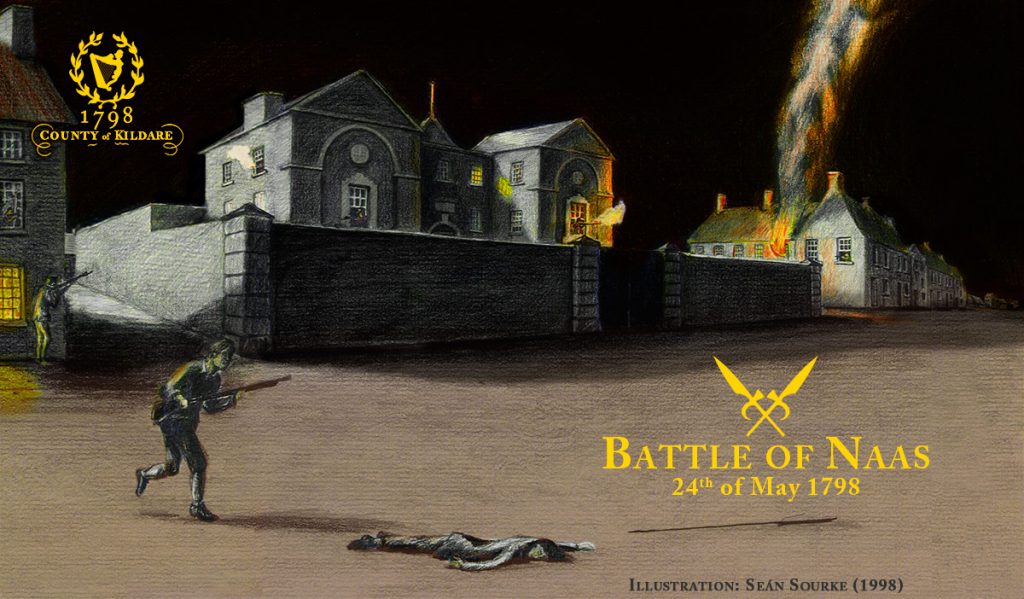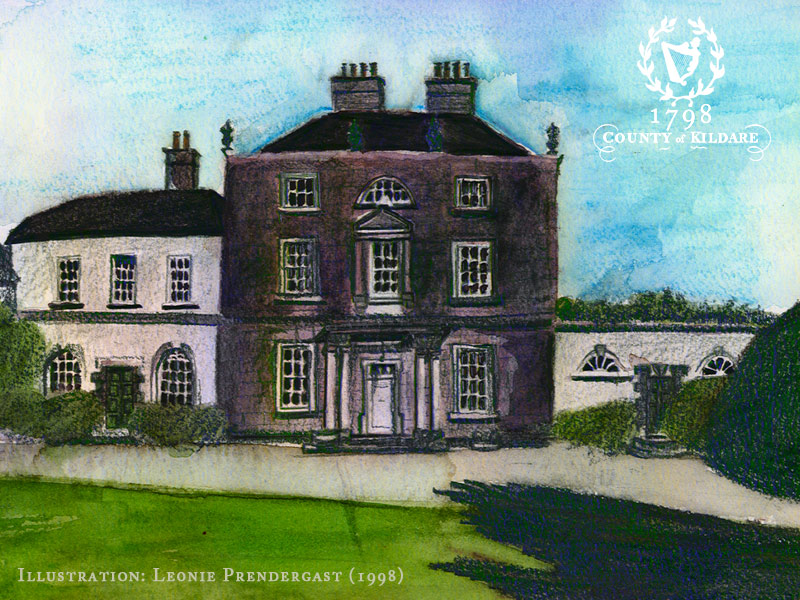Rebellion Towns & Villages

Naas
On the night of 23rd of May, the Munster mail coach was attacked and destroyed on its approach to Naas, all passengers were hacked to death. This was the planned signal for the rising. Around 1,000 to 3,000 men, led by Michael Reynolds of Johnstown gathered in the Tipper quarries and marched on the town at 2.30 am on Thursday 24th May.
Naas was the strongest garrison in the county consisting of 150 of the Armagh militia, 24 of the 4th Dragoons, 35 of the Ancient Britons, 16 of the North Naas Cavalry under Captain Neville and two field pieces, all under the command of Colonel Lord Gosford.
The main attack along the Johnstown road, consisted of around one thousand men led by Reynolds. They almost made it to the gaol but were repulsed.
The rebels had attacked the town from different directions and the bulk of them almost reached the barrack, but were dispersed.
In all, around 30 were killed in the streets with over 100 killed by the cavalry as they fled the town – the Government forces lost 22 men. It seems Gosford even had 6 cabins and 6 houses (including an Inn and an Alms House) destroyed to accommodate the canon fire.
More than 800 pikes and 20 firelocks were recovered, mainly from the quarries. One of the rebel leaders, John Andoe was hanged in the town the next day. Michael Reynolds escaped to the Wicklow mountains; he died from a wound received at the battle of Hacketstown on 25th June.
On the 24th and 25th of May, troops were withdrawn from the surrounding districts to Naas by General Dundas to consolidate his forces.

Rebellion Towns & Villages
Naas | Ballymore | Old Kilcullen | Knockaulin | Narraghmore | Ballitore | Athy | Monasterevin | Kildare Town | Rathangan | Gibbet Rath | Clane | Prosperous | Timahoe | Ovidstown | Surrender
